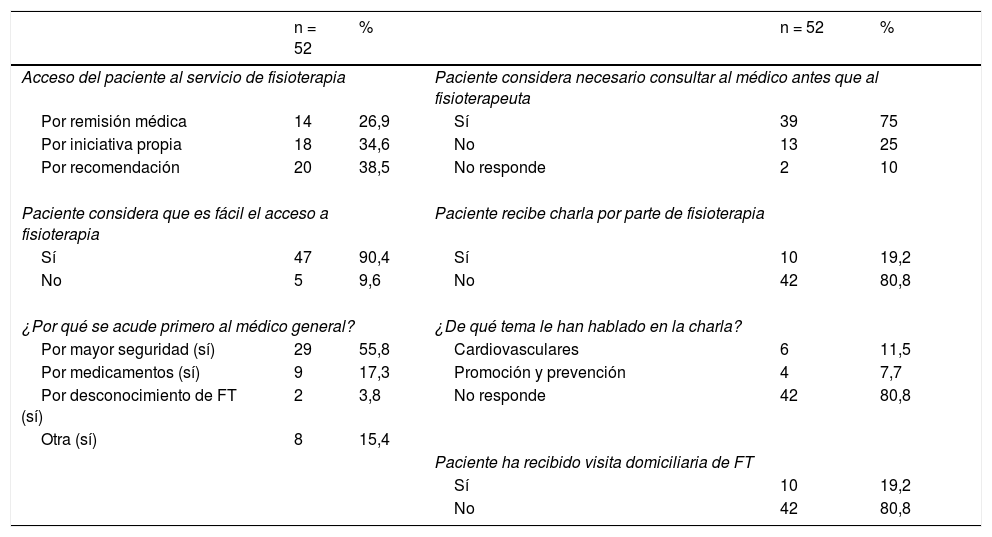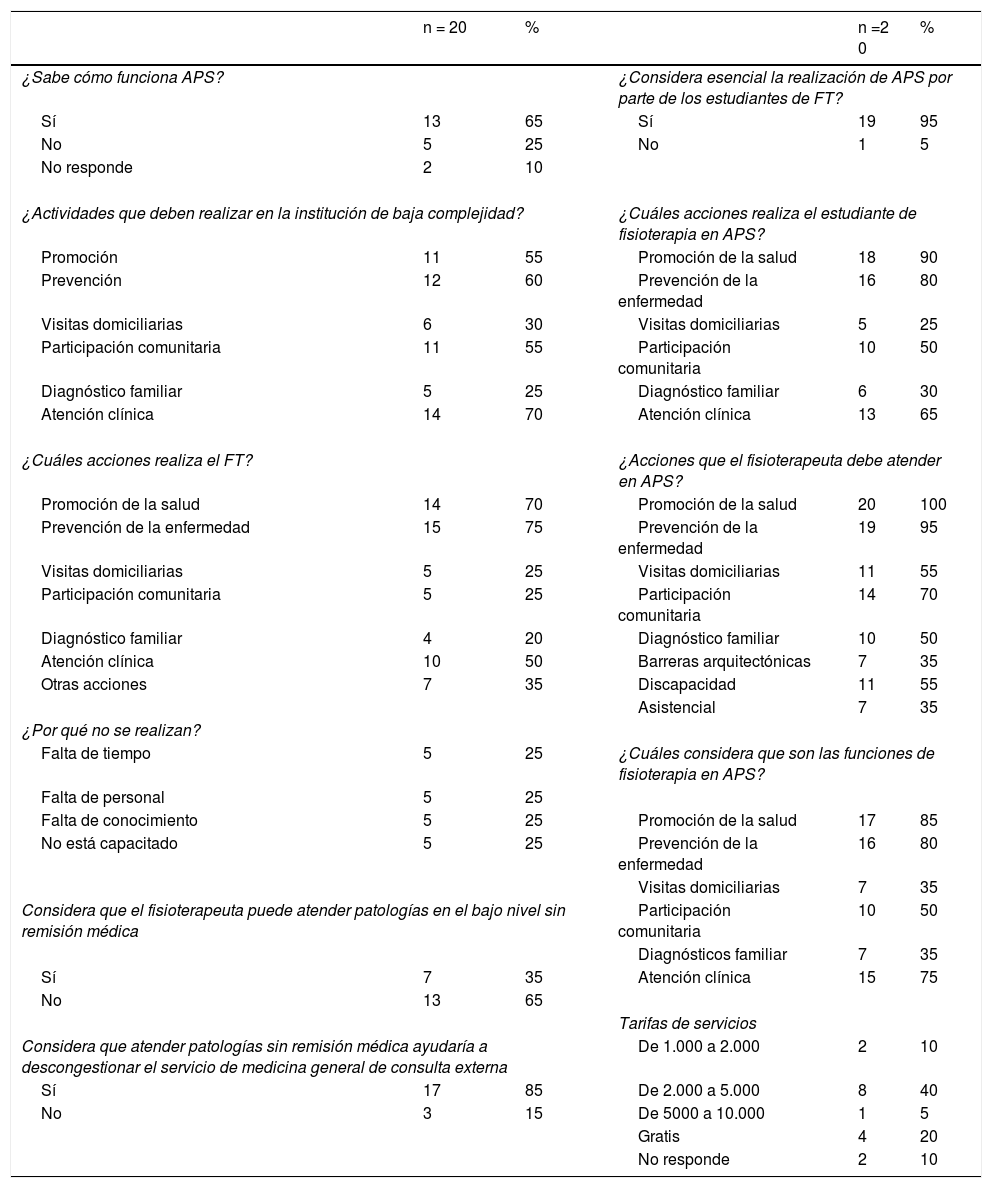Describir las acciones de Fisioterapia en Atención Primaria en Salud (APS) en dos instituciones de bajo nivel de complejidad en la ciudad de Popayán, Colombia.
Materiales y métodosEstudio observacional descriptivo de corte transversal, no probabilístico, en dos instituciones de baja complejidad de atención en salud en la ciudad de Popayán. Se utilizaron dos cuestionarios tipo encuesta: el primero con pacientes atendidos por fisioterapia (n=139), el segundo con el equipo de salud de las instituciones (n=20), para determinar la participación de fisioterapia en APS en el primer semestre del año 2017.
ResultadosEl 63,3% de la población atendida son mujeres y el 36,7% son hombres; presentan hipertensión arterial (22,3%); consultan por enfermedades osteomusculares (44,6%); acceden al servicio de fisioterapia por iniciativa propia o por recomendación de otra persona (73,1%); prefieren consultar al médico general antes que ir al fisioterapeuta (75%).
Del equipo de salud, el 100% de los fisioterapeutas manifiestan tener capacidad y conocimiento para atender patologías de baja complejidad, sin tener remisión médica. El 95% de los profesionales consideran esencial la realización de APS por parte de los fisioterapeutas; el 100% de ellos consideran necesaria la participación de fisioterapia en acciones de promoción de la salud, y el 95%, en las acciones de prevención de la enfermedad.
ConclusionesSe demuestra que los fisioterapeutas pueden participar en la estrategia APS en instituciones de bajo nivel de complejidad realizando un trabajo diagnóstico, asistencial y de promoción de la salud distinto e independiente del trabajo clínico que realizan en los servicios de rehabilitación.
To describe the actions of Physiotherapy in Primary Health Care (PHC), in two institutions of low level of complexity in the city of Popayán, Colombia.
Materials and methodsA descriptive, observational, non-probabilistic, cross-sectional study conducted in two institutions of low complexity of health care, located in the city of Popayán. Two survey-type questionnaires were used: the first one was for patients attended by physiotherapy (n=139); the second, for the health team of the institutions (n=20), to determine the participation of physiotherapy in PHC, in the first semester of 2017.
ResultsThe majority of patients seen were women (63.3%). They had arterial hypertension (22.3%), and consulted for skeletomuscular diseases (44.6%). A large majority (73.1%) had access to the physiotherapy service on their own initiative or by recommendation of another person, although 75% preferred to consult the general practitioner before going to the physiotherapist
From the health team, 100% of the physiotherapists state that they have the capacity and knowledge to treat pathologies of low complexity in health, without having to make a medical referral. Most (95%) of the professionals considered it essential for PHC to use physiotherapy, and all (100%) of them considered it necessary to participate in physiotherapy in health promotion actions, and 95% in actions to prevent disease.
ConclusionsIt is shown that physiotherapists can participate in the PHC strategy in institutions of low complexity level, performing a diagnostic, health care and promotion work that is distinct and independent of the clinical work performed in the rehabilitation services.
Artículo
Si ya tiene sus datos de acceso, clique aquí.
Si olvidó su clave de acceso puede recuperarla clicando aquí y seleccionando la opción "He olvidado mi contraseña".Comprando el artículo el PDF del mismo podrá ser descargado
Precio 19,34 €
Comprar ahora










